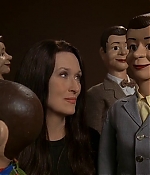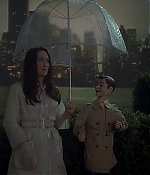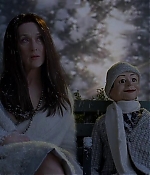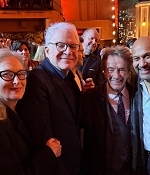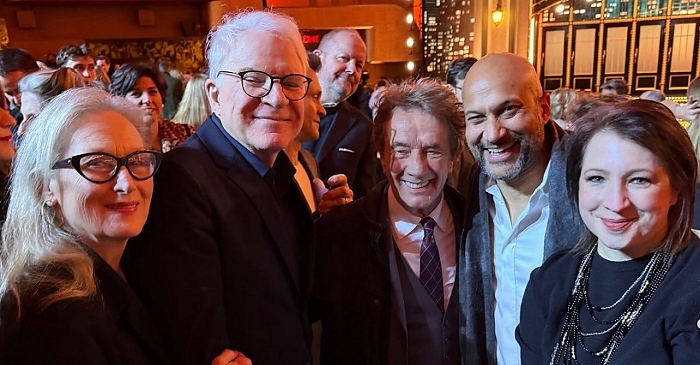|
Simply Streep is your premiere source on Meryl Streep's work on film, television and in the theatre - a career that has won her the praise to be one of the world's greatest working actresses. Created in 1999, we have built an extensive collection to discover Miss Streep's body of work through articles, photos and videos. Enjoy your stay.
|
Celebrating
25 years
of SimplyStreep
|
The Music of Regret
May 24, 2006
· Art 21
· 40 minutes
|
Filmed in 2006 at Industria Studios, New York, photographer Laurie Simmons directs scenes for her first film, “The Music of Regret,” starring Meryl Streep. A longtime friend of Simmons and married to a sculptor herself, Streep conveys the difficulties and advantages of leaving a solitary studio practice to work with dozens of crew and collaborators on a motion picture. Streep remains the only real person in the film. As Simmons says, “the original idea was to use the girl dummy, the wooden dummy, all the way through Act Two. As the music and lyrics became more complex, and the emotions became more complex, I wasn’t sure that a puppet could actually carry Act Two. That was when I decided that the puppet would become a real woman. I was nervous about it because the woman in Act Two was the only real person emoting or responding in the whole movie. So, that was a big consideration, to actually introduce a real woman into the mix. But I really felt it was important, and I’m glad that I did. I meant that I had to direct an actress, and that was new, but I did it.”
“It would have been too uncomfortable to think about Meryl Streep portraying me in the movie. So, once she claimed the part, I stopped thinking about the part as representing me or my life. The first time I saw her, which was at a wig shop, it was very unsettling. I walked in, and Meryl had her back to me. And she stood up and turned around, and I saw her in the dark wig. And there was one moment where I thought, “This is very eerie; this is very odd.” And she looked absolutely beautiful in this long, dark wig. Once she became the character, it wasn’t about me anymore. And in fact, right after that, I went back to the studio and had the dummy’s eyes painted blue; the dummy’s eyes had been brown like mine. And I stopped claiming that character as a surrogate self, as a version of me. That made it much easier to proceed, when I didn’t have to think about that character as being me.”


